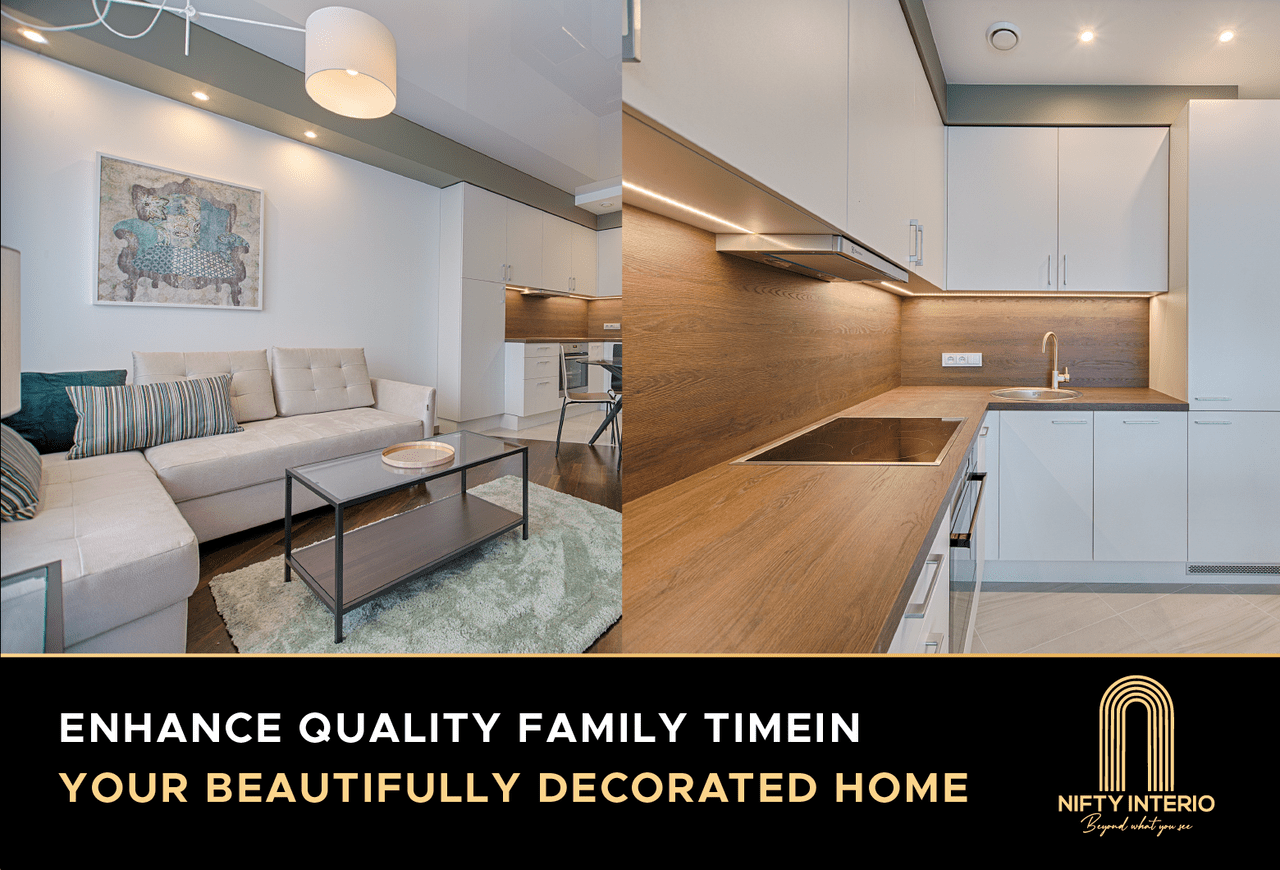How Interior Design Encourages Family Wellness

Jun 12, 2023
Wellness design, that once started as an experimental concept, is now quite the ideal in home interior planning. Though it is only in recent times that the bond between interior design and its effect upon human emotions has garnered attention, this form of environmental psychology has been in practice for thousands of years, evident in Indian Vastu Shastra and Chinese Feng Shui. A consciously designed space of beauty naturally leads to healthier and happier lives, making one’s home a safe retreat, away from the chaos of day to day.
Point to be noted, merely adhering to construction codes cannot transform home interiors into a healthy living space. Wellness-focused residential interior design makes use of the right design elements in creating a calming and rejuvenating environment, offering residents an experience that can support their wellbeing and enhance the good times.
Here are some ways that home interior design can create an environment conducive to reducing stress, anxiety, and depression –
1. Accentuating Mood Lifting Natural Light
On average, people enjoy spending time in the warm glow of the sun rather than under the buzz and glare of cold white electric light bulbs. Even for people attending corporate workspaces, they prefer access to ample natural light and wide, sweeping views of outdoors in nature or urban skylines of cityscapes, inspiring creative productivity.
The more natural light there is in a home, the brighter, airier, and more spacious it is going to feel, even if it is a compact area of limited square footage! Moreover, exposure to light boosts serotonin levels, helping home residents to stay rejuvenated and cheerful all day long. Interior designers in Hyderabad especially focus on natural light inflow for children’s dorms, family rooms, drawing areas and library-cum-studies where conversations should flow as people come together.
Naturally lit environs also promote wellness by regulating the body’s innate circadian rhythms, which in turn positively influences sleep quality, boosting overall wellbeing. Well chalked-out interior designs also highlight windows and skylights by hanging luminously coloured fabrics from the light source.
2. Intermixing Natural Elements In the Decor
Placing natural motifs within a design space is a great way to effectively promote wellness and nurturing. Biophilic designs involve decor materials curated straight from nature’s lap, including wood, stone, water and green foliage.
Bringing the outside in helps cut through the monotony and lets people foster a stronger, sweeter connection with nature. Not only does nature-inspired decor help mood enhancement but also paves the path for sustainable lifestyle choices by bringing more biodegradable materials into use.
Natural residential interior design makes elaborate use of cane and wicker planters, shelves, chairs and more. Accent or highlight materials used include rope, twines, dry flowers and leaves, bright natural pigment colours on earthen wares and others.
Suggested Read : How To Pick The Right Indoor Planter For Your Home?
3. Strategic Use of Earthen Colours & Textures
Residential interior decor schemes follow a certain rule of thumb regarding effective use of colours and textures for setting the mood. Hospitality spaces use calming color schemes in blues and greens to exude a sense of relaxation by forming association with Mother Earth.
Earthy hues with accents of nature colours are doubly enhanced when executed in the decor space through sensory textures, using materials like soft fabrics, embossed and textured walls, earthen plates, grassy mats and more. Textures used this way promote deep feelings of comfort and security.
3. Relaxation Zone
Wellness is also deepened through the creation of multiple relaxation zones where family members can gather for coffee, conversations, and quiet moments after a hard day of work. Interior decor schemes ensure spaces dedicated for comfortable seating – with plush armchairs, comfortable ottomans, and wide sofas.
Meditation spaces created with a view of the outdoors are also great for providing guests a place to escape and focus on self, with calm breathing and other mindfulness practices. In addition, home interior design plans are often equipped with special spa amenities, like steam rooms and saunas, hot tubs for fragrant baths prepared with relaxing salts and other ingredients for calming down jagged nerves.
Family frolic becomes manifold when rejuvenation becomes part of the residents’ everyday life and this can be properly ensured through an interior design that supports a healthy lifestyle for all members, together!
4. Shared Activity Space
A family bonds best based on shared interests and activities that get them happy and excited together, and home interiors can be uniquely designed to meet custom needs of every family. Be it a shared love for cooking or joint enthusiasm for an art room, interior design can bring a family together seamlessly and well!
Continue Reading : How Interior Designing Makes Your Living Space Better

An ambitious entrepreneur & self-made designer revolutionizing interior aesthetics with innovative, functional, & personalized designs. Founder of Nifty Interio, creating designs that bring dreams to life.
